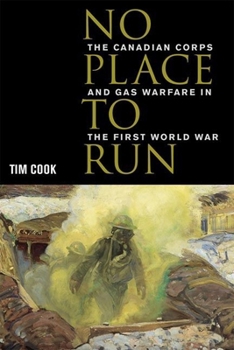No Place to Run: The Canadian Corps and Gas Warfare in the First World War
Select Format
Select Condition 
Book Overview
Historians of the First World War have often dismissed the important role of poison gas in the battles of the Western Front. In No Place to Run , however, Tim Cook shows that the serious threat of gas did not disappear with the introduction of gas masks. By 1918, gas shells were used by all armies to deluge the battlefield, and many soldiers were exposed to this new chemical plague. Cook uses fascinating primary sources -- diaries, letters, reminiscences, published memoirs, and the official archival record -- to illustrate the horror of gas warfare for the average trench soldier. As the first chlorine clouds rolled across the fields during the second Battle at Ypres, soldiers were forced to stuff urine-soaked handkerchiefs in their mouths in order to survive. As the gas war evolved, mustard gas plagued the soldiers at the front as it lay active in mud and snow for weeks on end. There was no escape from the pervasive nature of poison gas. Entering the dug-outs where they slept, gas attacked men when they were least ready. No Place to Run poses a challenging re-examination of the function of gas warfare in the First World War, including its important role in delivering victory in the campaigns of 1918 and its curious postwar legacy, and will be of interest both to historians and military buffs.
Format:Paperback
Language:English
ISBN:0774807407
ISBN13:9780774807401
Release Date:April 2000
Publisher:University of British Columbia Press
Length:304 Pages
Weight:1.05 lbs.
Dimensions:0.9" x 6.0" x 9.0"
Customer Reviews
1 rating
a brilliant technological study
Published by Thriftbooks.com User , 21 years ago
This book shows, stage by stage and step by step, how the soldiers of the Great War adapted to the new killing techniques that they faced. This book truly places the fighting man of the First World War as an equal of the working man of the 'Twenties. The man who faced newer and deadlier chemicals in wartime was the same worker who faced the "Brave New World" of the 'Twenties. This work truly shows how it was the working man's ethos that won the war.





